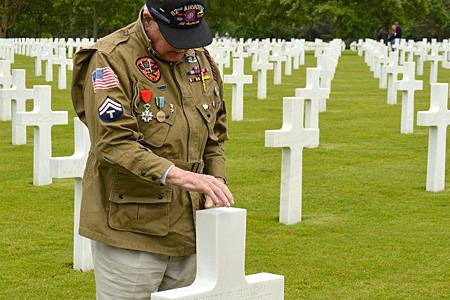以銅為鏡,可以正衣冠。
以古為鏡,可以知興替。
以人為鏡,可以明得失。
戰爭是殘酷的一個行為,每個人都不希望發生,
但是時局的變遷,總是免不了會有。
希望和平與理性能避免無謂的爭鬥
希望不再有戰爭的發生~~~~
D-Day在軍事術語中經常作為表示一次作戰或行動發起的那天。迄今為止,最著名的D日是1944年6月6日-諾曼第戰役打響之日 - 即同盟國反攻在第二次世界大戰中被納粹德國佔領的歐洲大陸的開始。本文將介紹術語D日的一般用途。
術語D日和H時用作表示一次作戰或行動發起的日期和時刻。之所以使用D和H,是由於英文「日(Date)」和「時(Hour)」的第一個字母。它們在行動日期和時刻未決定或保密的時候作為行動日期和時刻的代號。通常所有參與一次特定行動的所有單位擁有唯一的D日和H時。不言而喻,H時應在D日當中。
當和數字以及正號或負號一起使用時,這些術語表示指定行動的提前或推遲時間長度。如H-3時表示H時的3小時前,D+3日表示D日的3天後。H+75分則表示H時加上1小時15分鐘。
大規模行動的計畫書通常在行動時刻之前很久就會詳細得制訂完畢。因此,命令通常會通過標記有D日或H時加上或減去一個特定日,時或分的數字來下達。在後來的適當時間,後續的命令將標記真實的日期和時間。
最早使用這些術語的是第一次世界大戰中的美軍。在日期為1918年9月7日的美國遠征軍第一軍的第9號戰地命令中寫到「第一軍將在D日H時發起以迫使St. Mihiel Salient撤退為目的的攻擊。」
諾曼地登陸的D日被定為1944年6月6日,這天也被廣泛地由D日這個縮寫來代替(法語中被稱作Jour-J.)。
文字擷取維基百科:http://zh.wikipedia.org/wiki/D%E6%97%A5
D-DAY與H-HOUR由來
The terms D-day and H-hour are used for the day and hour on which a combat attack or operation is to be initiated. They designate the day and hour of the operation when the day and hour have not yet been determined, or where secrecy is essential. The letters are derived from the words for which they stand, "D" for the day of the invasion and "H" for the hour operations actually begin. There is but one D-day and one H-hour for all units participating in a given operation. It is unnecessary to state that H-hour is on D-day.
When used in combination with figures and plus or minus signs, these terms indicate the length of time preceding or following a specific action. Thus, H-3 means 3 hours before H-hour, and D+3 means 3 days after D-day. H+75 minutes means H-hour plus 1 hour and 15 minutes.
Planning papers for large-scale operations are made up in detail long before specific dates are set. Thus, orders are issued for the various steps to be carried out on the D-day or H-hour minus or plus a certain number or days, hours, or minutes. At the appropriate time, a subsequent order is issued that states the actual day and times.
The earliest use of these terms by the U.S. Army that the Center of Military History has been able to find was during World War I. In Field Order Number 9, First Army, American Expeditionary Forces, dated September 7, 1918: "The First Army will attack at H hour on D day with the object of forcing the evacuation of the St. Mihiel Salient."
D-day for the invasion of Normandy was set for June 6, 1944, and that date has been popularly referred to by the short title "D-day."
Source: The General Service Schools, Fort Leavenworth, Kansas, Combat Orders (Fort Leavenworth, Kansas: The General Service Schools Press, 1922).
文章來源:http://www.history.army.mil/faq/ddaydef.htm
HISTORY網站:http://www.history.com/topics/world-war-ii/d-day














 留言列表
留言列表
